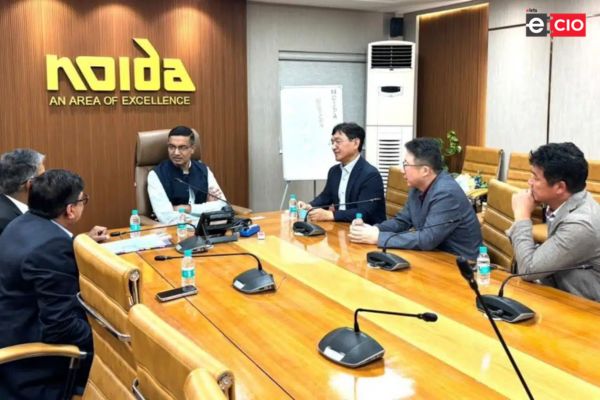
Huawei Technologies has publicly unveiled its most advanced AI computing system, CloudMatrix 384, at the World Artificial Intelligence Conference (WAIC) in Shanghai. The debut marks a significant milestone in China’s bid to accelerate domestic innovation and reduce reliance on foreign AI technologies.
The CloudMatrix 384 platform, featuring 384 of Huawei’s 910C AI chips, was the centrepiece of Huawei’s exhibition at WAIC, drawing considerable interest from global AI stakeholders and analysts. The system is being positioned as a high-performance rival to Nvidia’s GB200 NVL72, which integrates 72 of Nvidia’s flagship B200 chips. Analysts suggest that while Huawei’s chip performance may not surpass Nvidia’s, its system-level design enables powerful aggregate output.

The core of Huawei’s performance innovation lies in its proprietary “supernode” architecture, which allows ultra-fast interconnectivity between hundreds of chips. This architecture enables the system to optimise parallel processing and data exchange, enhancing overall throughput and scalability in enterprise-grade AI tasks. The approach represents Huawei’s strategic pivot toward system-level excellence as a way to offset hardware limitations imposed by U.S. trade restrictions.

Industry analyst Dylan Patel of SemiAnalysis previously stated that CloudMatrix 384’s capabilities “could beat Nvidia” in specific metrics, citing architectural advantages and system-level design choices that prioritise density and connectivity. According to Patel, the system’s architecture compensates for less powerful chips by leveraging large-scale integration and high-speed interlinking.

While Huawei’s booth attracted large crowds during the conference, company representatives declined to provide technical demonstrations or live benchmarks. Questions from the media regarding the system’s full capabilities were met without comment, and no official press release accompanied the launch.
Despite the muted reception, industry observers view the public introduction of CloudMatrix 384 as a signal of China’s growing ambition in the AI infrastructure domain. Huawei Cloud CEO Zhang Pingan confirmed in June that the system was already operational within Huawei’s cloud services ecosystem, offering cloud-based AI computing capabilities to enterprise clients.
The unveiling comes amid intensifying efforts in China to develop self-reliant AI ecosystems. Huawei, long under pressure from U.S. export controls, has increasingly positioned itself as a leader in AI chip development, cloud computing, and infrastructure-level solutions tailored for domestic markets. The CloudMatrix platform is viewed not only as a technical milestone but also as a symbol of technological resilience and strategic autonomy.
Nvidia, which has long dominated global AI computing, has acknowledged Huawei’s rapid advancements. In a May 2025 interview, Nvidia CEO Jensen Huang recognised Huawei as a key competitor, noting the company’s accelerated progress in system integration and AI capabilities.
As global demand for high-performance computing continues to surge, Huawei’s CloudMatrix 384 may serve as a blueprint for future AI platforms optimised for speed, scale, and domestic applicability. While questions remain regarding its real-world performance, Huawei’s bold entrance into the top tier of AI infrastructure underscores the shifting dynamics of technological leadership in the global AI race
Be a part of Elets Collaborative Initiatives. Join Us for Upcoming Events and explore business opportunities. Like us on Facebook , connect with us on LinkedIn and follow us on Twitter.
"Exciting news! Elets technomedia is now on WhatsApp Channels Subscribe today by clicking the link and stay updated with the latest insights!" Click here!












